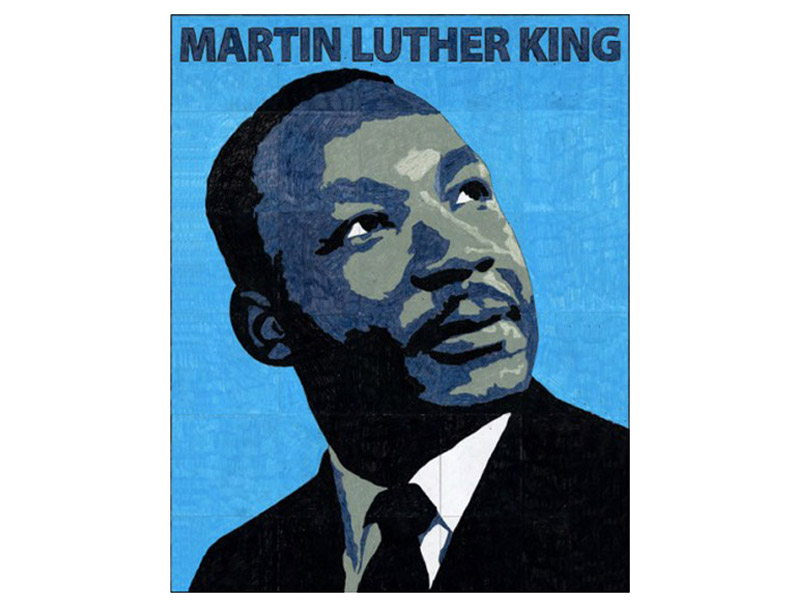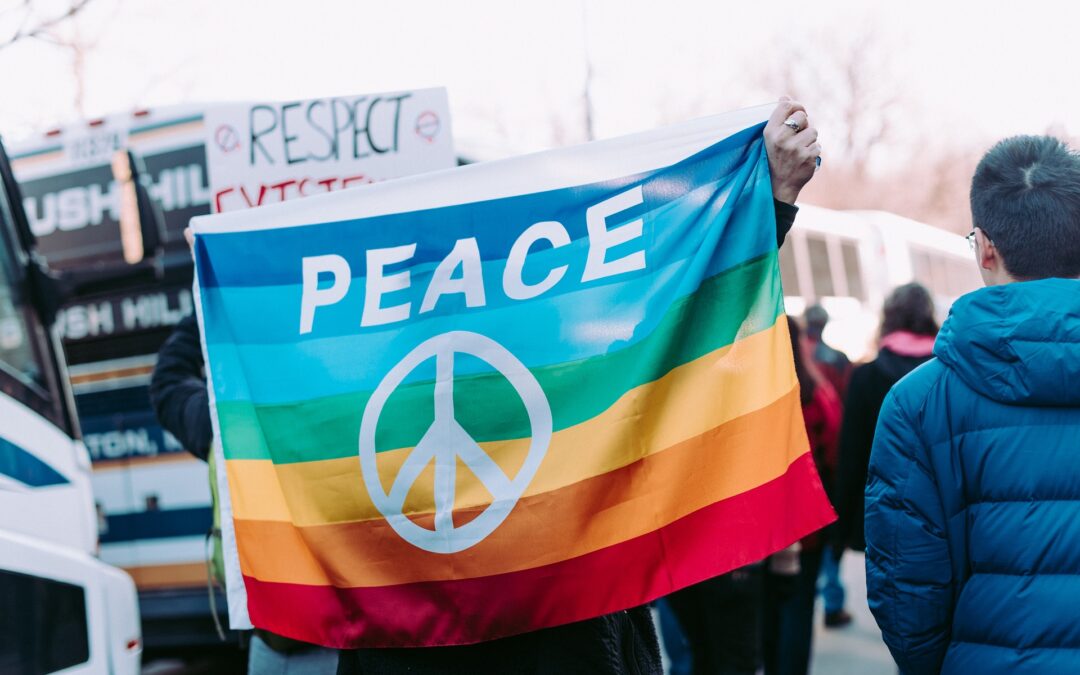Ahimsa (nonviolence) is central to the many teachings of Martin Luther King Jr (MLK), yoga philosophy, and nonviolent communication (NVC).
“Nonviolence means avoiding not only external physical violence but also internal violence of spirit.” – Martin Luther King, Jr.
“Ahimsa is not causing pain to any living being at any time through the actions of one’s mind, speech or body.” – Sandilya Upanishad
“Nonviolent Communication is based on the principle of ahimsa – the natural state of compassion when no violence is present in the heart.” – Marshall Rosenberg.
MLK’S SIX PRINCIPLES OF NONVIOLENCE
 Martin Luther King Jr. embraced six principles of nonviolence (1):
Martin Luther King Jr. embraced six principles of nonviolence (1):
Nonviolence is a way of life for courageous people.
Nonviolence seeks to win friendship and understanding.
Nonviolence seeks to defeat injustice, not people.
Nonviolence holds that suffering can educate and transform
Nonviolence chooses love instead of hate.
Nonviolence believes that the universe is on the side of justice.
YOGA PHILOSOPHY ON AHIMSA
One ethical system in yoga philosophy from “The Yoga Sutras of Patanjali” refers to five ethical restraints called yamas and five ethical observances called niyamas. The first yama is ahimsa and is said to be the most important of the yamas and niyamas (2).
Ahimsa is often translated as nonviolence. Examples of living this ethic include:
- Refraining from physical violence
- Not using violent speech, such as NVC methods
- Avoiding hurtful thoughts of others.
Yet, ahimsa is more complex than avoiding violent thoughts, feelings, or actions. Sometimes it is also interpreted as active love of all beings. So practicing ahimsa takes
courage to resist reacting violently and instead cultivating compassion for oneself and others. It is not just avoiding violence but also thinking, feeling, and acting constructively.
Benefits of ahimsa may include:
- Developing self-love and love for others
- Strengthening your willpower
- Fostering peace of mind
- Cultivating compassion.
Ahimsa includes practicing non-violence in mind, body, and spirit. Regular practice of yoga can help to develop this attitude of non-harming. Yoga Master Sri Dharma Mittra explains, “Without ahimsa there is no yoga.”
AHIMSA IN ACTIVISM
Activism guided by ahimsa is social action based on love rather than anger. It requires recognizing the opposition as not innately wicked. Instead, try seeing them as beings who are still deserving of love even if you find their beliefs and behavior unjust. Practicing ahimsa while protesting can be challenging. Yet, what if by showing the opposition care instead of outrage you are able to reach them? Practicing ahimsa is to also adhere to MLK’s first, third, and fifth principles of non-violent living.
“Here is the true meaning and value of compassion and nonviolence, when it helps us to see the enemy’s point of view, to hear his questions, to know his assessment of ourselves.” – Martin Luther King, Jr.
NONVIOLENT COMMUNICATION AS A PRACTICE OF AHIMSA
Nonviolent communication (NVC), sometimes referred to as compassionate communication, draws on ahimsa and MLK’s second and fourth principles of non-violent living. NVC honors the nonviolent practices of individuals like Martin Luther King Jr. and many other justice activists that inspire the way in which we exist in the world.
NVC confronts not only explicit violence but the undercurrent of subtle violence that permeates many cultures. It offers a method to develop empathy through deep listening to ourselves and others. Bu using NVC’s tools and practices, a person can attempt to recognize the depth of their compassion. This understanding allows deeper connection and love for ourselves and others. It offers simple tools to comprehend and try to meet the needs of others.
To learn about the NVC model and how to practice it, check out the Center for Nonviolent Communication Self Guide (3).
We hope you carry love and compassion on and beyond the mat!
Sources:
Six principles of nonviolence, https://kinginstitute.stanford.edu/sites/mlk/files/lesson-activities/six_principles_of_nonviolence.pdf
2020 New Years Message From Sri Dharma Mittra, https://www.dharmayogacenter.com/2020-new-years-message-from-sri-dharma-mittra/
NVC Instruction Self-Guide, https://www.cnvc.org/online-learning/nvc-instruction-guide/nvc-instruction-guide
By Charon K.




